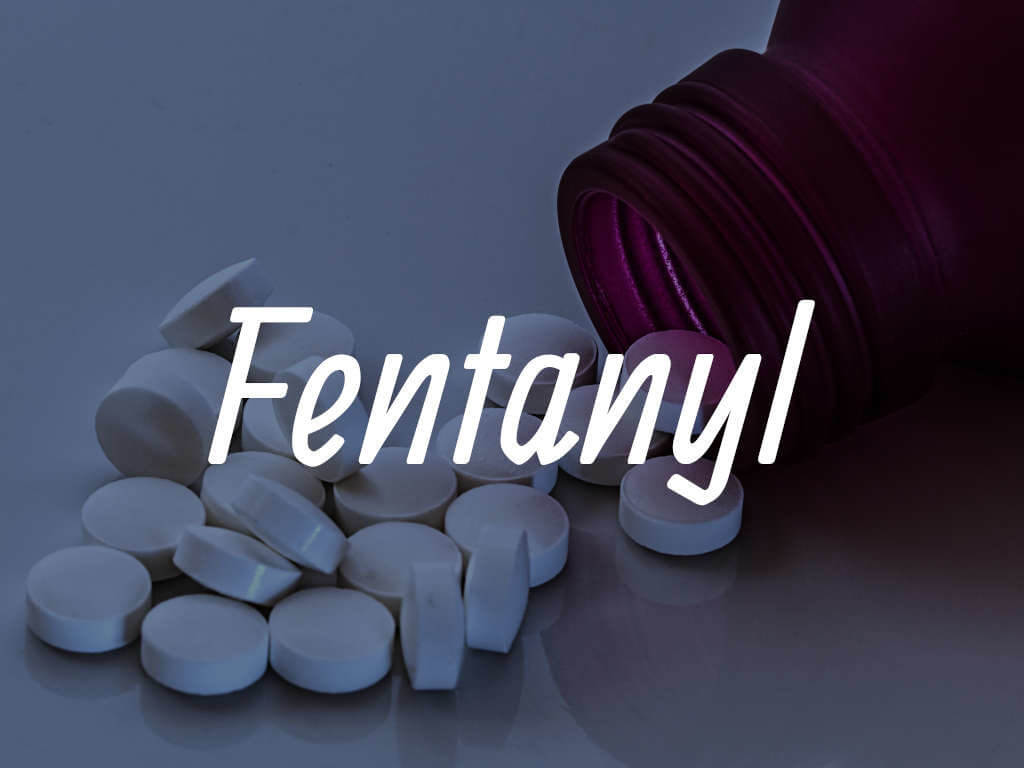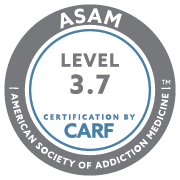
In 2017, the U.S. Department of Health and Human Services declared a national public health emergency in response to the opioid crisis, as requested by President Donald Trump.
This action was taken as the result of 2016 data which reported that opioid overdoses were responsible for more than 42,000 deaths that year. (This number has increased dramatically.) This number represented the highest number of fatal drug overdoses in a single year in American history.
An estimated 40 percent of these drug-related deaths involved some type of prescription opioid painkiller. The number one offender? Fentanyl. Approximately 59 percent of all 2016 opioid deaths were caused by this powerful painkiller.
In 2019, the opioid crisis is still in full swing in the United States – and there is no indication that opioid overdoses are going to slow down anytime soon. Every one of us has a responsibility to stay informed if we are ever going to see a positive change in this critical area of the American landscape.
SO, let’s talk about Fentanyl – the most dangerous and deadliest narcotic currently available on the planet.
Fentanyl and the Opioid Crisis: Cause and Effects
The opioid epidemic in the United States started with the over-prescription of painkillers in the late 1990s. Decades later, the emergence of fentanyl made the issue even worse. As regulations on prescription opioids tightened, the illegal drug market filled the gap with fentanyl, a synthetic opioid far stronger than traditional opioids.
This shift from earlier opioids to fentanyl significantly increased overdose risks, as fentanyl is often mixed unknowingly with other drugs. The rise of this drug started the fentanyl opioid crisis, creating a far-reaching public health emergency.
What is Fentanyl, Anyway?
Fentanyl is a very potent prescription opioid that was developed in the 1950’s as an anesthetic. It became popularized in the United States in the 1990’s as a narcotic pain reliever. Today, millions of doctors across the U.S. prescribe this medication for pain management.
Fentanyl is legally available in the United States in pill, patch, lozenge, and liquid (intravenous) form. In order to legally obtain this substance, someone must have a legal prescription a doctor who is licensed to prescribe it.
Doctors only prescribe this medication after all other treatment options have failed. It is only offered to patients who are in extreme pain or have a terminal illness. It is a last resort medication. It is highly addictive and can cause sudden death due to respiratory depression.
Fentanyl Facts – Some Shocking Truths About this Opioid
Many people don’t know the difference between Fentanyl and other legal opioids like Hydrocodone and Oxycodone. There is a BIG difference. To be clear, Fentanyl is essentially legal heroin.
When this medication is used, one tiny dose will relieve very serious pain, giving the user a buzz in the process. Of course, many people use this drug recreationally. Make no mistake – it does not take much Fentanyl to get high. Too much of the stuff can lead to an accidental overdose or death. To put this into perspective, Fentanyl is similar to morphine, but it is 50 to 100 times more potent!
Although some of the overdose deaths reported happen accidentally by people who are taking the drug legally, most Fentanyl-related deaths happen to those who are obtaining and using the drug illegally. This happens for a number of reasons. One reason is that users do not know how to dose the medication properly and end up taking too much.
Synthetic Fentanyl From Foreign Labs is Taking Over the Drug Scene
Because there is a high demand for Fentanyl, foreign laboratories have infiltrated the United States drug market with synthetically manufactured versions of the drug. Most of these labs are in China, Canada, or Mexico. When trafficked, the substance usually comes in a pill or powdered form. It is usually snorted or injected.
Believe it or not, ordering from these labs is quite easy. It is a fairly straightforward purchase using a credit card. A prescription is not required. The stuff is shipped directly to a user’s preferred address. Most packages make it through customs without being flagged.
The problem is, this type of Fentanyl is completely unregulated. It is produced by unlicensed, black market labs with no oversight. This means a buyer really has no idea what they are getting when they use the stuff they buy from another country.
Buyer Beware – What’s in Your Stash?
More and more frequently, synthetic Fentanyl is showing up in street heroin tested by the Drug Enforcement Agency (DEA). It also frequently shows up on toxicology screens performed in drug overdose deaths. There is a reason for this.
Street dealers are adding synthetic Fentanyl to their product to make their stash go further and to keep users coming back for more. Because this drug produces such a powerful high, word will get out on the street that a particular dealer has “the good stuff” and users will go to him to purchase their heroin.
The unfortunate consequence is that heroin users won’t have any idea what is in their stuff. So, they will take their usual dose and wind up with too much Fentanyl in their system. A fatal overdose is often the result.
Who Is Most Affected by the Opioid Crisis and Fentanyl Use?
This tragedy has impacted a diverse range of individuals across the United States, cutting across various demographics. However, certain groups suffer the most because of fentanyl.
Age Groups: Young adults (ages 18-25) and middle-aged adults (ages 26-50) have the highest rates of fentanyl misuse and overdose. This trend reflects broader opioid misuse patterns in these age groups.
Socioeconomic Factors: Individuals in lower socioeconomic brackets abuse fentanyl at significantly higher rates. Limited access to healthcare and addiction treatment services worsens the risk and consequences of misuse of the drug in these communities.
Geographical Variations: Certain regions, particularly in rural areas and specific urban centers, have higher rates of fentanyl-related incidents. Economic factors, availability of the drug, and lower levels of public health response contribute to these differences.
Prescription vs. Illicit Use: People prescribed fentanyl for pain management, especially chronic pain patients, risk developing dependence. Meanwhile, the illicit use of fentanyl, often mixed unknowingly with other drugs, affects a different demographic, including recreational drug users and those with a history of substance abuse.
Gender Differences: Recent data suggests that men may be at a slightly higher risk of fentanyl overdose and death, aligning with broader trends in substance abuse disorders.
Understanding who is most affected by the fentanyl crisis is crucial for developing targeted interventions and support systems. It’s a key step in addressing this multifaceted public health emergency.
Strategies for Preventing Fentanyl Addiction and Misuse in The Opioid Crisis
The alarming rise in fentanyl addiction and misuse calls for an urgent response. Here are some of the strongest prevention strategies for fentanyl abuse:
Education and Awareness: Increasing public awareness about the dangers of fentanyl, especially the risk of overdose, is crucial. Potential targets for educational campaigns can include schools, community centers, and healthcare settings.
Prescription Monitoring: Implementing and strengthening prescription drug monitoring programs (PDMPs) help healthcare providers track prescription histories and identify potential misuse or overprescribing of opioids, including fentanyl.
Safe Prescribing Practices: In the medical field, enforcing rules and regulations for prescribing fentanyl keeps patients safe. Considering non-opioid pain management alternatives and prescribing naloxone alongside opioids may also help reduce the risk of overdose.
Access to Treatment: Expanding access to addiction treatment services, including medication-assisted treatment (MAT), counseling, and support groups, provides hope and healing for those affected by the fentanyl opioid crisis.
Harm Reduction Measures: Providing harm reduction services such as needle exchange programs, fentanyl test strips, and increased access to naloxone reduces the risk of overdose for those who use drugs.
Regulatory Actions: Tightening regulations on the production, distribution, and importation of fentanyl limits the drug’s availability on the illicit market.
Support for At-Risk Populations: Targeting interventions and support services to at-risk groups, such as those with a history of substance abuse or those in economically disadvantaged areas, keeps fentanyl out of the hands of the most vulnerable.
Fentanyl and The Opioid Crisis: How We Turn the Opioid Crisis in a Positive Direction
As addiction experts, we are on the frontlines of the opioid epidemic. At New Directions for Women, we are saving lives by helping one addicted woman at a time. We help women of all ages, pregnant women, and women with children find freedom from fentanyl addiction. We believe this is ultimately how the United States will gain victory over the deadly effects of this deadly substance.
If you are hooked on Fentanyl, you should NEVER try to quit this substance on your own. Withdrawals could cause seizures, stroke, death, and other serious health complications. To quit this drug safely, you MUST undergo a medical detox to ensure your safety.
Kicking a Fentanyl addiction is not easy. It is a lengthy and involved process that usually involves residential treatment. However; putting in the work is always worth it. No matter how hopeless things may seem, you CAN learn to live and enjoy life without the use of this toxic chemical.
We Are Here to Help
An addiction to Fentanyl is a legitimate health crisis. Your life is in danger. Think of the tens of thousands of people who have lost their lives by overdosing on this opioid narcotic. They didn’t do it on purpose. They accidentally overdosed. This could happen to you too! You are not exempt from death by Fentanyl!
If you are ready to get your life back, we are here to help. Our life-saving addiction treatment program will help you find freedom from the bondage of addiction.












